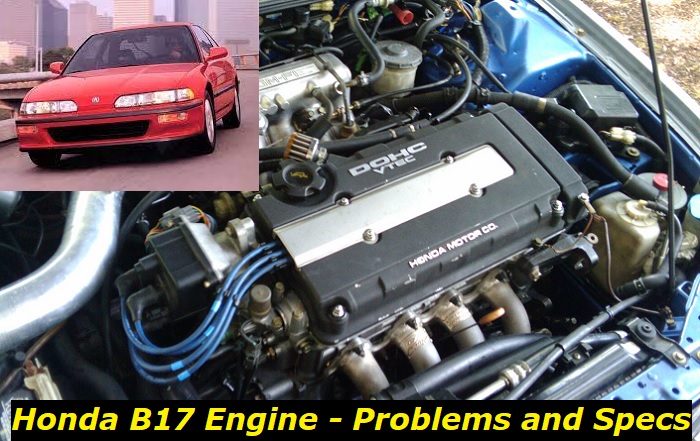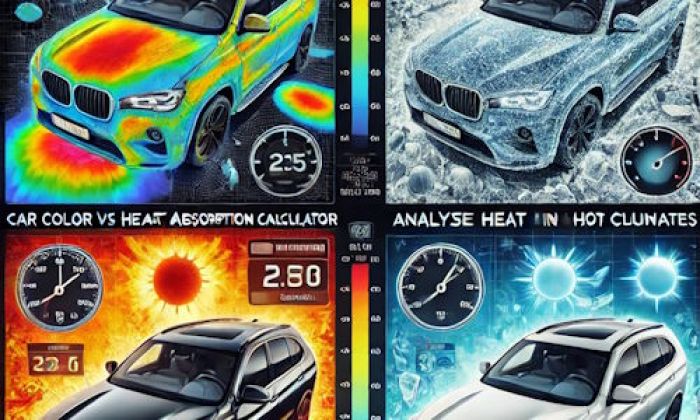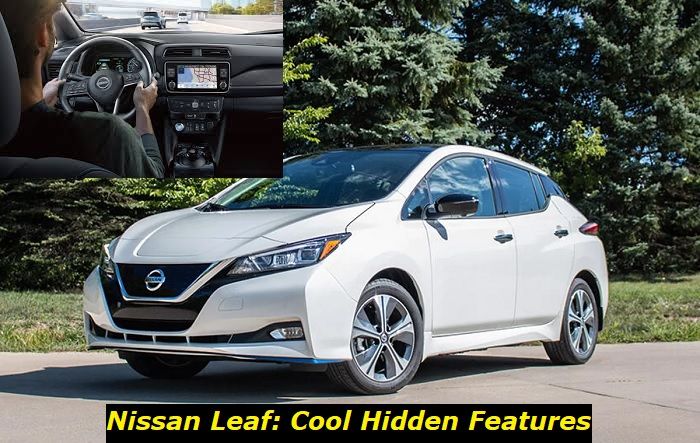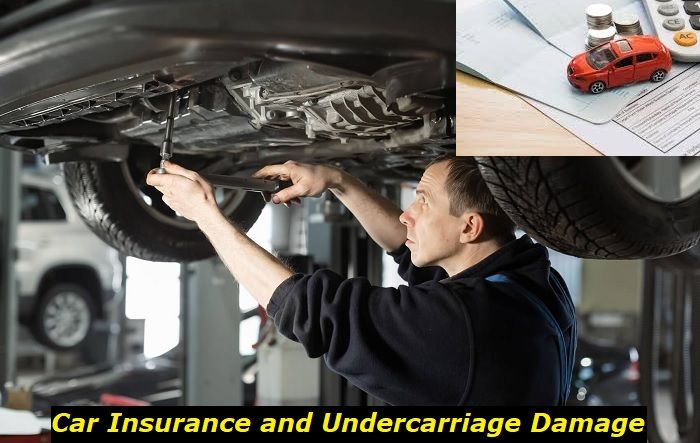The B17 was one of the models offered under the B-Series family of engines from Honda. This unit was known for powering up the 1992 to 1993 Integra, which is what we know now as the Acura Integra. Despite coming from the B-Series which spanned a long production run from 1988 to 2001, the B17 was only offered in the market for a rather very short period in the 90s.
But then again, the product has become one of the popular project engines at present, which is usually utilized for swaps in other B-Series-equipped cars. It is also widely used as a specimen for various tuning upgrades.
In this article, we will fact-check whether or not the B17 is truly a reliable engine by checking its longevity, problems, and specs. As a bonus, we will also be providing tips on how to fix the common problems encountered by owners of the engine.

Key features and my opinion about the engine
- Production years:1992-1993
- Average lifespan of B17:210,000-230,000
- Fuel supply type:port injection
- Power range:162 hp
- Fuel efficiency:average
- Engine block material:aluminum
- Engine reliability score:medium
- The most common problems:coolant leaks, oil consumption, VTEC problems, YS1 cable transmission problems.
Longevity
The B17 engine is built for longevity. One factor that gives us confidence about this claim is that it is built by Honda, which is a brand known for its good engines. Add to that the fact that the unit is from the famed B-Series of the automaker.
The B17 may not be as popular as the preceding B16 and the succeeding B18 engines but it does not make it any less when it comes to durability. According to owners' reports and expert analysts, the engine is capable of incurring high mileage before requiring an overhaul or major parts replacement.
With proper maintenance, this engine can last for decades or an estimated mileage of over 220,000 miles.
When properly cared for, the B17 engine can provide drivers with reliable performance and long-lasting results. It's for this reason that it is one of the much sought-after models of Honda's B-Series range.
Common Problems of the Honda B17 Engine
Although scarce in numbers, the Honda B17 is still in use by dedicated motorheads to this day. However, compared to the more advanced engines of our time, some owners of the engine may find more room for improvement in the B17's performance, particularly in its power.
This part explores the common complaints normally experienced by owners of the B17 based on reports, forums, and reviews. As you will notice, later on, some of these simply stem from the intrinsic design of the engine. Meanwhile, others are due to its regular wear and tear since we are talking about a 30-year-old engine here.
1. Use of YS1 Cable Transmission
This is not a technical problem per se because it is actually a feature of the engine. Having a YS1 cable transmission is what makes the B17 engines such an odd bunch. Because of this, the B17 has a different input shaft and shorter final drive which means it requires plenty of conversion jobs when used as an alternative replacement for other B-Series-equipped cars.
Specifically, it will require a hydro to cable conversion kit or a hydro B-Series transmission for it to be used in other B-Series cars other than the 1993 and 1994 Integra.
Many Honda car aficionados will probably tell you to steer clear of this in your engine swapping projects as a result and settle for the B16 or B18 instead. However, it should be noted that the B17A1 is not much better or worse than the B16A6 in terms of output.
As for the YS1 transmission that comes with it, we strongly advise that you keep it when acquiring one as it has a high demand in the market and you can quickly sell it for a good price. Therefore, it may be worth all your efforts after all.
2. Original Parts are Very Rare
It's been around three decades since the last batch of the B17 engines made it out of the assembly line. Thus, sourcing out original engine parts replacement for your 93-94 Integra can be such a chore. Swapping it with other engines requires some conversion processes to accommodate its unique transmission system. This is another consideration that you have to make when buying vehicles native to the engine.
Luckily, because B-Series engines have developed a strong cult following over the years, you can still find alternative or even OEM replacement parts for the B17 in various shops especially online. A good way to start your search for them is in Japanese automotive shops that ship directly to the US.
3. Underpowered by Today's Standards
We have come a long way when it comes to engine development. Therefore, some may find the B17 lacking in power compared to modern engines. Now, this is where tuners come in handy.
As we have said, the B17 has been a darling for tuners because it is durable enough to handle plenty of the present-day mods, including up to stage three tuning packages and turbocharger upgrades. For what it lacks in power, it makes up for its resiliency.
A Stage 1 tuning typically includes an ECU remapping as well as the installation of a performance air filter and exhaust system. This can add a little horsepower to the engine.
A Stage 2 tuning benefits from all the goodies found in Stage 1 and adds a more advanced performance chip to the engine management system together with enhanced sports cats and modifications in the cylinder head, camshaft, fuel injectors, and fuel pump. This can add more horsepower by increasing the amount of fuel and air going into the engine.
A Stage 3 tuning can include all of the above, plus installing a bigger turbocharger. This can really increase the power of the engine, but it may also require some other modifications to reinforce the other crucial components of the donor vehicle in order to better handle the extra kick.
Adding a turbocharger is perhaps the most effective way to increase the power of a Honda B17 engine. A turbocharger forces more air into the engine, which allows it to burn more fuel and produce more power.
Turbochargers can add a significant amount of power to an engine, but they also put a lot of stress on the engine components. For this reason, it is important to make sure that the engine is in good condition before installing a turbocharger.
Before you set off to buy some turbos and Stage 3 parts for the B17, cool down and think twice. This is the old engine with probably a lot of miles on it. Its longevity is not going to leave you happy after any kinds of performance tuning.
4. Carbon Buildup
The tendency of carbon build-up in engines can get more frequent as they age. The B17, being already three decades old, can be prone to this.
One way to reduce the prevalence of carbon build-up in older engines is to use fuel additives. Fuel additives can help clean the engine and prevent carbon deposits from forming. There are many different types of fuel additives available, so it is important to choose one that is recommended by Honda for the B17 engine.
Another way to reduce carbon buildup in your engine is to upgrade the ignition system. An upgraded ignition system will create hotter sparks, which will help burn off any carbon deposits that may be present in the cylinders.
If you have carbon buildup in your engine, it is important to have it removed as soon as possible. Carbon build-up can cause a variety of problems, including decreased performance and increased fuel consumption.
There are many different ways to remove carbon buildup, so it is important to choose a method that is compatible with your engine. You can ask your mechanic or do some research online to find the best way to remove carbon buildup from your engine.
5. Leaks
One of the most common causes of leaks in the Honda B17 engine is a faulty or damaged gasket. The gasket seals the space between the engine block and cylinder head and prevents oil and coolant from leaking out. If the gasket is damaged, it can cause oil and coolant to leak from the engine.
Another common cause of leaks in the Honda B17 engine is a cracked or damaged engine block. Over time the engine and its linkages such as the hoses may develop cracks and holes. These cracks and holes can allow oil and coolant to leak out of the engine.
The best way to prevent leaks in the Honda B17 engine is to regularly check the gaskets, sealants, hoses, and engine block for damage. If you find any damage, it is important to repair or replace the parts as soon as possible. You should also regularly check the oil and coolant levels in the engine, and add more if necessary.
If you have any questions about leaks in the Honda B17 engine, or if you need help repairing or replacing a part, the best way to go around the problem is by consulting a qualified technician.
B17 Engine Specs
Notwithstanding the issues associated with it, the B17 essentially has pretty decent specs that play an integral part in its performance and reliability. Basically, the engine uses the VTEC technology of Honda which brings in higher performance at higher RPM and lower fuel consumption at lower RPM.
The unit has a displacement of 1,678cc with a bore of 81 mm, a stroke of 81.4 mm, and a compression ratio of 9.7:1. It has a high redline at 8,000 rpm. The setup is capable of up to 160 hp at 7,600 rpm and 117 lb-ft of torque at 7,000 rpm. Standard in the engine is the integration of a special YS1 cable transmission.
Conclusion
To wrap things up, the Honda B17 engine is indeed a very reliable engine with durability as its most defining trait. It may be underpowered by today's standards but it is resilient enough to handle plenty of modern engine mods.
Moreover, most of its commonly reported problems are just normal for an engine of its age that can be typically remedied or mitigated via periodic maintenance. It's for these reasons that we highly recommend this for engine swap or replacement for your classic Honda or any compatible car.
About the authors
The CarAraC research team is composed of seasoned auto mechanics and automotive industry professionals, including individuals with advanced degrees and certifications in their field. Our team members boast prestigious credentials, reflecting their extensive knowledge and skills. These qualifications include: IMI: Institute of the Motor Industry, ASE-Certified Master Automobile Technicians; Coventry University, Graduate of MA in Automotive Journalism; Politecnico di Torino, Italy, MS Automotive Engineering; Ss. Cyril and Methodius University in Skopje, Mechanical University in Skopje; TOC Automotive College; DHA Suffa University, Department of Mechanical Engineering






Add comment